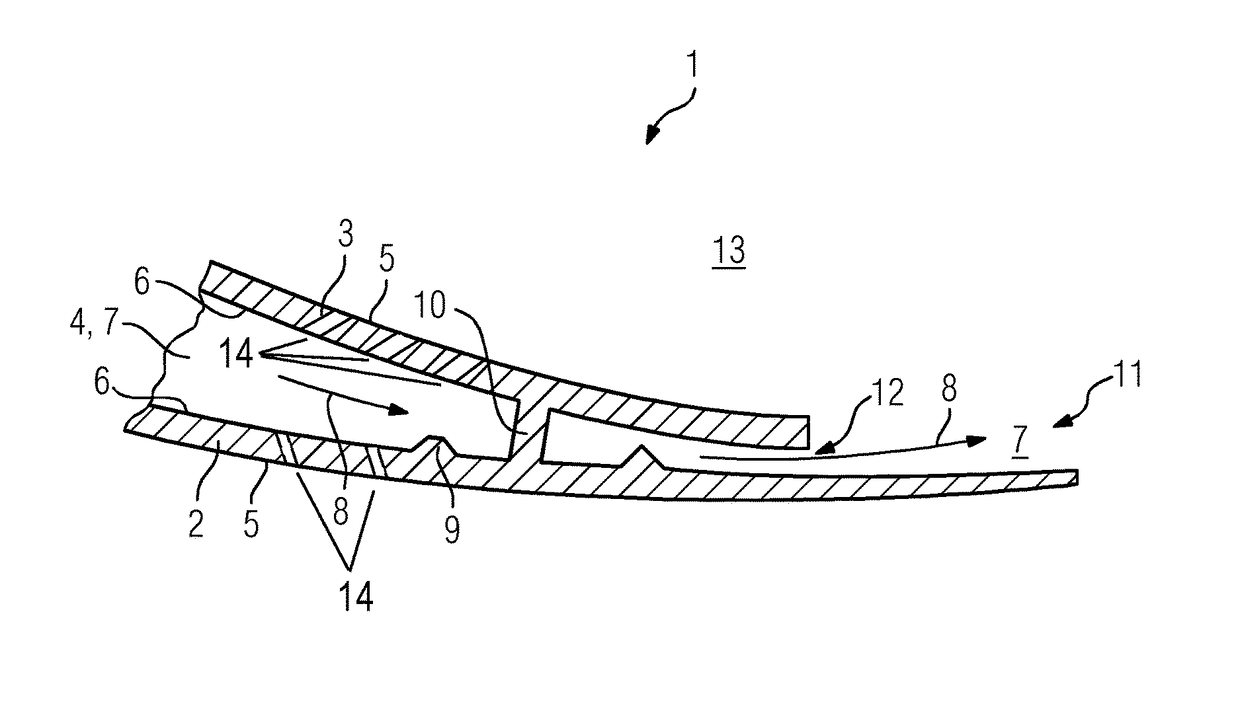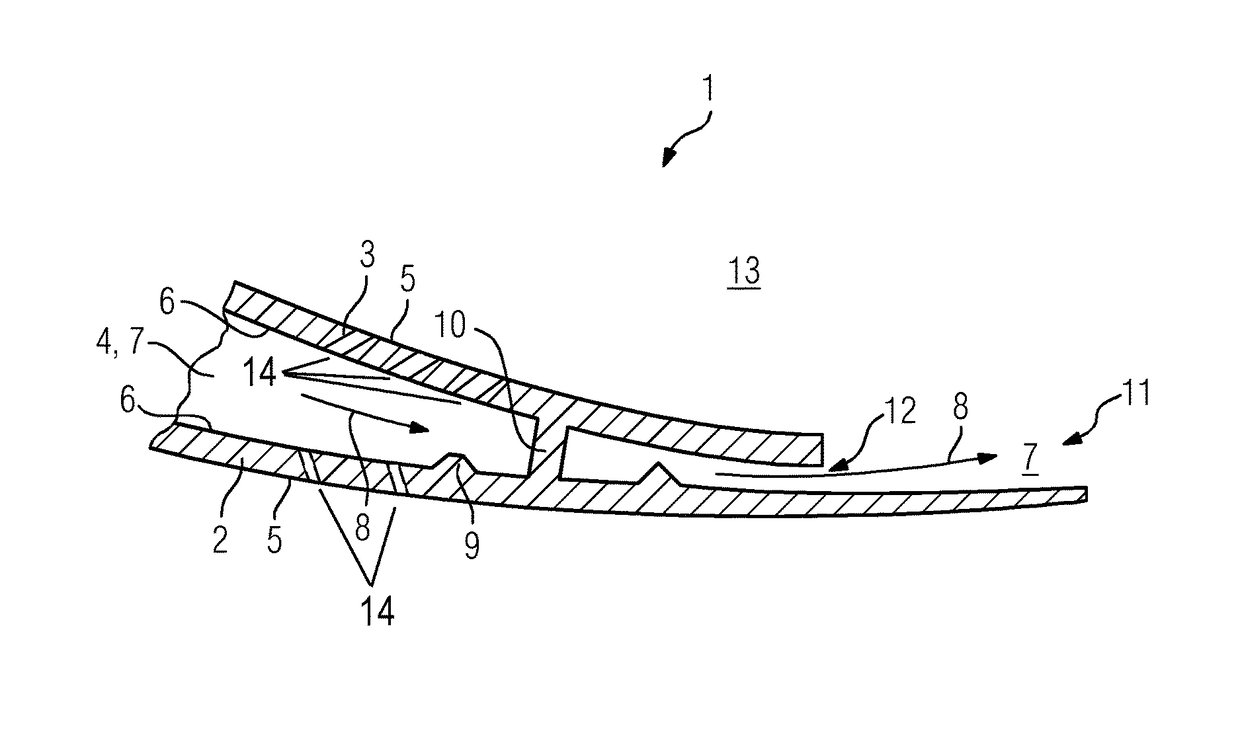Cooled turbine guide vane or blade for a turbomachine
a technology of turbine guide vane and turbine blade, which is applied in the direction of engine fuction, stators, machines/engines, etc., can solve the problem of limited maximum acceptable inlet temperature, increase the heat transfer of convective cooling by cooling fluid flowing through the cavity, and reduce the amount of cooling fluid
- Summary
- Abstract
- Description
- Claims
- Application Information
AI Technical Summary
Benefits of technology
Problems solved by technology
Method used
Image
Examples
Embodiment Construction
[0015]In the FIGURE, an embodiment of a turbine airfoil 1 of a turbomachine is shown. The turbine airfoil 1 can be a rotor blade as well as a guide vane. The turbine airfoil 1 comprises a suction side wall 2 and a pressure side wall 3 which border a cavity 4—an airfoil cavity, a hollow space inside the airfoil 1—inside the turbine airfoil 1. In the FIGURE, the trailing edge 11 of the turbine airfoil 1 and the area adjacent to the trailing edge 11 are shown. The width of the cavity 4 reduces towards the trailing edge 11.
[0016]Each of the walls 2, 3 comprises an inner face 6 and an outer face 5. During the operation of the turbomachine a hot gas (not shown) flows in the flow channel 13 between two adjacent turbine airfoils along the walls 2, 3 with a main flow direction directed from the leading edge (not shown) to the trailing edge 11. In the cavity a cooling fluid 7 flows with a cooling fluid main flow direction 8 which is substantially parallel to the walls 2, 3 and oriented toward...
PUM
 Login to View More
Login to View More Abstract
Description
Claims
Application Information
 Login to View More
Login to View More - R&D
- Intellectual Property
- Life Sciences
- Materials
- Tech Scout
- Unparalleled Data Quality
- Higher Quality Content
- 60% Fewer Hallucinations
Browse by: Latest US Patents, China's latest patents, Technical Efficacy Thesaurus, Application Domain, Technology Topic, Popular Technical Reports.
© 2025 PatSnap. All rights reserved.Legal|Privacy policy|Modern Slavery Act Transparency Statement|Sitemap|About US| Contact US: help@patsnap.com


